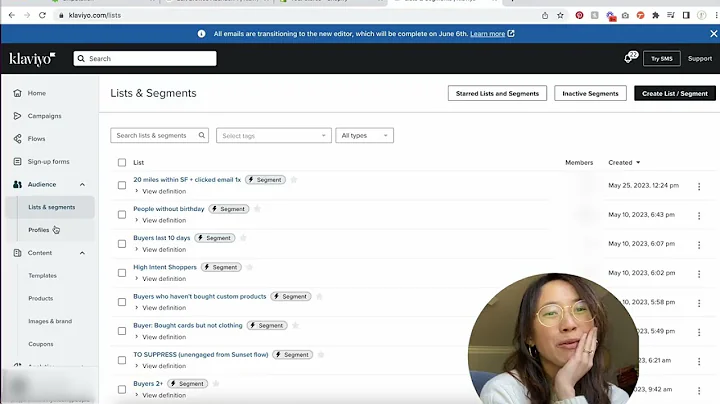My Week-long Dropshipping Journey on Amazon
Table of Contents:
- Introduction
- My Experience of dropshipping on Amazon
- The Dropshipping Model: How Does It Work?
- The Challenges of Dropshipping on Amazon
- The Importance of Research in Finding Profitable Products
- Dealing with Customer Complaints and Mistakes
- Suspension Risks in Dropshipping
- Longevity and Sustainability of Dropshipping on Amazon
- Conclusion
- FAQs
My Experience of Dropshipping on Amazon
Over the past week, I embarked on an experiment to try my hand at dropshipping on Amazon. In this video, I aim to provide complete transparency about my journey, including the products I listed, their costs, and the profits I made. Unlike other gurus who boast about their sales figures without disclosing the actual profit they earn, I want to give you an accurate picture of what it's really like to be a dropshipper on Amazon.
But before I dive into the nitty-gritty details, let me introduce myself. My name is Joey Gore, and I've been involved in e-commerce, particularly dropshipping, for the past three years. I've dabbled in various online businesses and gained valuable experience along the way.
Now, let's get started with my week-long dropshipping adventure on Amazon.
Introduction
As a child, I always had an entrepreneurial spirit. I would buy things and sell them on platforms like eBay to make a few extra bucks. However, I discovered a different business model that caught my attention: dropshipping. For those unfamiliar with dropshipping, it essentially involves listing products sourced from suppliers (such as Walmart or Best Buy) directly on an online marketplace like Amazon. When a customer makes a purchase, the supplier fulfills the order, and you earn a profit from the difference between the sale price and the supplier's cost.
Excited by the potential of dropshipping, I decided to delve into the world of Amazon. However, I soon realized that the path to success was not as straightforward as it seemed.
The Dropshipping Model: How Does It Work?
At the core of dropshipping is the "middleman" role. As a dropshipper, you act as a mediator between customers and suppliers. Rather than holding inventory or shipping products yourself, you simply list items on Amazon and fulfill orders through suppliers. This model offers several advantages, including minimal upfront costs, no inventory storage requirements, and the ability to offer a wide range of products without the hassle of manufacturing or shipping.
To get started, I needed to conduct extensive research on finding profitable products to list on Amazon. This involved scouring through various categories, using tools like the Google extension called Prime Away to identify non-prime sellers, and avoiding competition with Amazon's own fulfillment network (FBA). It's important to note that finding profitable products requires quality over quantity, as margins play a vital role in the dropshipping game.
The Challenges of Dropshipping on Amazon
Despite my initial excitement, I soon encountered several challenges in my dropshipping journey. The first hurdle was the lack of comprehensive guidance. While I watched numerous videos and even purchased a course, most of them failed to provide practical instructions on how to navigate the dropshipping process. It became apparent that the true implementation of the strategy remained hidden behind a sea of vague advice.
Another significant challenge was finding profitable products on Amazon. Unlike eBay, where it was relatively easy to identify market demand and competitive prices, Amazon's marketplace presented obstacles that required thorough research and analysis. It became evident that dropshipping on Amazon demanded patience, persistence, and extensive product evaluation.
The Importance of Research in Finding Profitable Products
Research became my most valuable tool in finding products with potential profitability. I spent countless hours scouring through different categories, comparing prices, and assessing competition. The key was to identify products that offered reasonable profit margins while avoiding oversaturated markets dominated by sellers leveraging FBA advantages.
After meticulous searching, I stumbled upon my first profitable product: a specialized version of the Swiffer cleaning tool. Priced at approximately $3.23, this item presented an opportunity to earn a profit. Encouraged by this find, I continued my search and discovered two more products: a stepladder and a coffee machine. The coffee machine, in particular, surprised me with its $18 profit margin, despite initial skepticism due to its availability and price.
Dealing with Customer Complaints and Mistakes
As sales grew, so did the challenges I faced. One critical mistake I made early on was neglecting to invest in essential software tools, opting to create my own spreadsheets instead. This decision backfired immensely when my Swiffer product quickly sold out on Walmart, affecting my ability to fulfill orders promptly. To prevent further complications and potential suspensions, I decided to absorb the loss and remove the out-of-stock item from my Amazon listing.
Customer complaints and late shipments further complicated my journey. One notable incident involved a customer threatening to open a claim against me, ultimately resulting in a refund and negatively impacting my order metrics. These issues emphasized the importance of effective customer service and prompt handling of fulfillment to avoid untoward situations.
Suspension Risks in Dropshipping
Dropshipping on Amazon comes with a significant risk of account suspension. Amazon's terms of service explicitly prohibit dropshipping, making sellers vulnerable to suspension and potential loss of funds. Many dropshippers have reported receiving messages accusing them of selling inauthentic items, even when they were not the actual sellers. These suspicious messages often lead to automatic suspensions, leaving sellers with limited recourse to prove their innocence.
The constant fear of suspension and the associated financial risks make dropshipping on Amazon an uncertain long-term business model. Despite the potential for quick profits, I found it difficult to envision sustained success while living in constant apprehension. Therefore, I would recommend thorough research and careful consideration before fully committing to dropshipping on Amazon.
Longevity and Sustainability of Dropshipping on Amazon
The sustainability of dropshipping on Amazon remains a subject of debate. While some individuals may achieve considerable success, the precarious nature of account suspensions and the violation of Amazon's terms of service raise doubts about the long-term viability of this business model.
Depending solely on dropshipping as a source of income exposes sellers to significant vulnerabilities. Any unforeseen complication, such as inventory shortages, customer complaints, or delayed shipments, can lead to negative account metrics and potential suspensions. Ultimately, sustaining profitability and avoiding suspension requires continuous adaptation and meticulous monitoring of the ever-changing landscape of Amazon's marketplace.
Conclusion
My week-long experience of dropshipping on Amazon has shed light on the intricate and often unpredictable nature of this business model. While I managed to generate a profit, it is essential to recognize the challenges and risks involved. Transparent discussions about account suspensions, profitability, and the sustainability of dropshipping are vital to providing aspiring entrepreneurs with realistic expectations.
I encourage those considering dropshipping on Amazon to conduct extensive research, fully comprehend the terms of service, and carefully evaluate the longevity and sustainability of this venture. While it offers potential rewards, the risks and uncertainties inherent in this business model require careful consideration before fully committing time, effort, and financial resources.
FAQs
Q: Is dropshipping allowed on Amazon?
A: Dropshipping is against Amazon's terms of service, making sellers susceptible to suspension and potential loss of funds. It is crucial to be aware of this risk before engaging in dropshipping on Amazon.
Q: Can dropshippers receive their earnings if they get suspended?
A: Suspended accounts often face significant challenges in accessing their funds. Amazon may hold the money, leaving dropshippers unable to withdraw their earnings until the suspension is lifted, if at all.
Q: What are some common challenges faced by dropshippers on Amazon?
A: Dropshippers often encounter difficulties in finding profitable products, dealing with customer complaints, ensuring timely shipments, and avoiding account suspensions. These challenges require effective customer service, meticulous research, and constant adaptation to mitigate risks.
Q: Is dropshipping on Amazon a sustainable long-term business model?
A: The long-term viability of dropshipping on Amazon remains debatable. Account suspensions, violation of terms of service, and the evolving nature of the marketplace present considerable uncertainties that may impact long-term sustainability. Thorough research and evaluation are essential before committing to this business model.






















